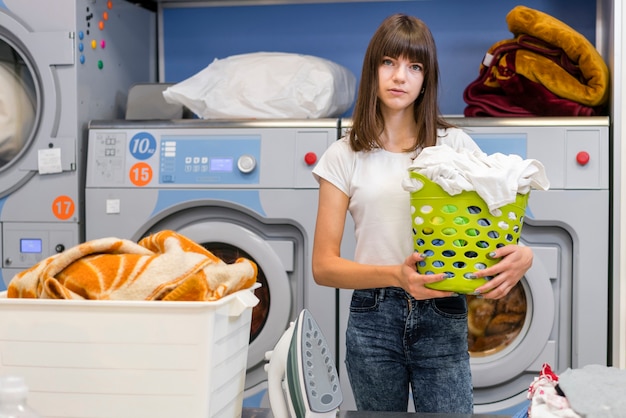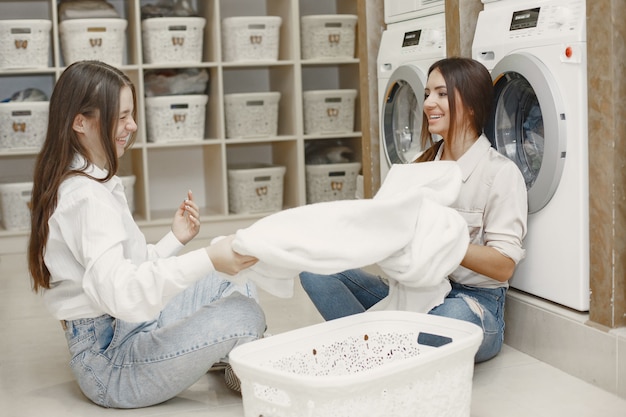Freestanding vs Integrated Washing Machines Pros and Cons Explained
Freestanding vs Integrated Washing Machines: Pros and Cons Explained - Learn the differences between standalone and built-in laundry units, including installation, design, price, maintenance, and performance.

- Anthony Arphan
- 6 min read

When it comes to selecting the right laundry equipment for your home, the decision can often be overwhelming. There are numerous factors to consider, from space constraints to aesthetic preferences and functional requirements. This guide aims to provide clarity by delving into the two main categories of these appliances, shedding light on their unique features and benefits.
Both standalone and built-in laundry units offer distinct advantages depending on your specific needs and living situation. Whether you prioritize flexibility and ease of installation, or seek a seamless, integrated look within your kitchen or utility room, understanding the key differences between these options is crucial. This article will explore the strengths and limitations of each type, helping you make an informed choice for your household.
By examining various aspects such as installation complexity, design compatibility, and performance, we will outline what each type of appliance brings to the table. Through a detailed comparison, you will gain insight into which option aligns best with your lifestyle and space requirements, ensuring your laundry routine is both efficient and aesthetically pleasing.
Comparing Freestanding and Integrated Washing Machines
When selecting a laundry appliance for your home, understanding the differences between standalone and built-in models is crucial. This section delves into the unique characteristics, benefits, and potential drawbacks of each type to help you make an informed decision.
| Feature | Standalone Models | Built-in Models |
|---|---|---|
| Installation Flexibility | These units can be placed in various locations, offering greater flexibility in terms of placement. They do not require custom cabinetry, making them easier to install and relocate. | These units are designed to fit seamlessly into your kitchen or laundry room cabinetry, providing a uniform look. However, they require precise measurements and professional installation. |
| Appearance | Standalone models are available in various designs and finishes, which can either complement or contrast with your home’s decor. | Built-in models are hidden behind cabinet doors, blending in with your existing decor for a streamlined and cohesive appearance. |
| Price | Generally, these models are less expensive initially and offer a wide range of price points to suit different budgets. | Built-in units tend to be more expensive due to the custom fitting required and the premium features they often include. |
| Maintenance | Maintenance and repairs are usually more straightforward as these units are more accessible and can be moved easily if necessary. | Maintenance can be more complicated and costly, as accessing the unit might require removing parts of the cabinetry. |
| Noise Levels | Noise levels can vary, but these units are typically noisier since they are not insulated by surrounding cabinetry. | Built-in models are generally quieter because they are encased within cabinetry, which helps muffle the sound during operation. |
Design and Aesthetic Considerations
When selecting between standalone and integrated laundry appliances, one crucial aspect to ponder revolves around the visual impact and stylistic coherence within your living space. The design choices you make can significantly influence the overall ambiance and functionality of your home environment.
How They Fit into Your Living Space
When considering these home appliances, their integration into your household revolves around more than mere functionality. Each type aligns differently with the spatial dynamics and aesthetic sensibilities of modern homes, offering distinct advantages that cater to varying lifestyles.
- For those valuing seamless design and discreet utility, one option seamlessly blends into cabinetry, embodying a minimalist ethos that preserves the visual flow of your kitchen or laundry area.
- Alternatively, the standalone counterpart asserts its presence with versatile positioning possibilities, facilitating easier access and flexibility in adapting to spatial constraints.
Understanding how these appliances harmonize with your interior extends beyond practical considerations, influencing how you interact with and perceive your living environment daily.
Customizing Your Laundry Space
In the realm of optimizing your laundry environment, tailoring the setup to your specific needs and preferences stands paramount. Crafting a laundry area that harmonizes with your lifestyle involves thoughtful consideration of spatial dynamics, functionality requirements, and aesthetic aspirations.
Personalizing this crucial part of your home involves more than mere utility; it’s about curating an environment that seamlessly integrates into your daily routine while enhancing the overall ambiance of your living space. From storage solutions to ergonomic layouts, each element contributes to a bespoke experience that reflects your individual style and practical necessities.
Exploring innovative solutions for organizing detergents, fabric softeners, and laundry essentials not only streamlines your workflow but also adds a touch of efficiency to every wash cycle. Optimizing the spatial flow ensures that every square inch is utilized judiciously, making tasks easier and more enjoyable.
Performance and Functionality
In evaluating the operational effectiveness and functional capabilities of standalone and integrated laundry appliances, several critical aspects come to the fore. Understanding the overall efficiency, operational nuances, and technological integration play pivotal roles in determining the suitability of these household utilities.
- Efficiency Metrics: Assessing the efficacy of laundry machines entails examining factors such as water consumption, energy efficiency ratings, and cycle duration. These metrics provide insights into how effectively the appliance handles different types of loads.
- Technological Integration: The seamless integration of advanced technologies like smart sensors, programmable settings, and adaptive cycle mechanisms enhances user convenience and optimizes performance outcomes.
- Noise Levels: Quiet operation is a key consideration for many users, impacting both comfort and practicality in household settings. Noise reduction technologies contribute significantly to enhancing overall usability.
- Performance Consistency: Consistent delivery of cleaning results across various fabric types and soil levels underscores the reliability of the appliance in meeting daily laundry needs.
- Maintenance Requirements: Understanding the maintenance demands, including filter cleaning, drum care, and periodic servicing, is crucial for prolonging the lifespan and sustaining optimal performance.
Ultimately, the blend of innovative functionalities and operational efficiencies defines the appeal and practicality of these essential home appliances, ensuring they meet the diverse demands of modern living.
Washing Efficiency and Features
In the realm of laundry appliances, the efficacy of cleansing and the array of functionalities stand pivotal. The capability to launder clothes effectively, utilizing advanced mechanisms for stain removal and fabric care, signifies a fundamental distinction. Beyond mere operational competence, the presence of specialized cycles for delicate fabrics and energy-efficient modes enhances the utility spectrum. Moreover, the integration of smart technologies, encompassing programmable settings and remote management, exemplifies contemporary innovation.
Ease of Installation and User-Friendliness

In this section, we delve into the simplicity and user experience aspects when setting up and operating these household appliances. Whether you opt for a standalone unit or one that seamlessly integrates into your kitchen cabinetry, the ease of getting started and daily usability are crucial considerations.
Ultimately, the choice between these two types of washing machines hinges not only on their technical specifications but also on how seamlessly they integrate into your lifestyle and home environment.